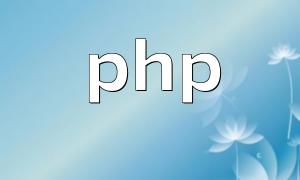Selecting the right payment interface is crucial in mobile app development. This article will introduce how to integrate PHP-based payment interfaces into iOS projects to help developers smoothly implement payment functions.
PHP is a widely used server-side language known for its flexibility and efficiency, making it excellent for handling payment interfaces. Combining PHP with iOS allows developers to quickly build secure and stable payment systems.
Before starting the integration of payment interfaces, it is recommended to complete the following preparations:
Register an account with a payment service provider, selecting platforms such as Alipay or WeChat Pay.
Obtain API keys and related configuration information, typically provided via the payment provider's backend.
Set up a server environment that supports PHP and necessary extensions to ensure the interface runs smoothly.
First, create a PHP file on your server to handle payment requests. Here is a sample code snippet:
// Payment request handling logic
$apiKey = 'your_api_key';
$amount = $_POST['amount'];
// Set request parameters as needed
$paymentData = array(
'api_key' => $apiKey,
'amount' => $amount,
// other parameters
);
// Execute payment request and return response
$response = file_get_contents('https://payment-gateway.com/api', false, stream_context_create([
'http' => [
'method' => 'POST',
'header' => 'Content-Type: application/json',
'content' => json_encode($paymentData),
]]
));
echo $response;
?>After creating the PHP payment interface, you can call it from your iOS app. Here's an example in Swift:
let url = URL(string: "https://your-server.com/payment.php")!
var request = URLRequest(url: url)
request.httpMethod = "POST"
request.setValue("application/json", forHTTPHeaderField: "Content-Type")
let paymentData: [String: Any] = ["amount": 100.00]
request.httpBody = try? JSONSerialization.data(withJSONObject: paymentData)
let task = URLSession.shared.dataTask(with: request) { data, response, error in
// Handle response
if let data = data {
let jsonResponse = try? JSONSerialization.jsonObject(with: data, options: [])
print(jsonResponse)
}
}
task.resume()Pay attention to the following points during integration:
Ensure network communication uses HTTPS to protect user data.
Understand API limits from your payment service provider to avoid exceeding request quotas.
Enhance user experience by providing timely feedback and minimizing interruptions during payment.
This article introduced the steps to integrate PHP-based payment interfaces into iOS apps, including preparation, interface creation, and calling examples. Adjusting according to your specific business needs and payment provider documentation will improve the stability and security of payment functionality. Wishing you smooth development and project success!









